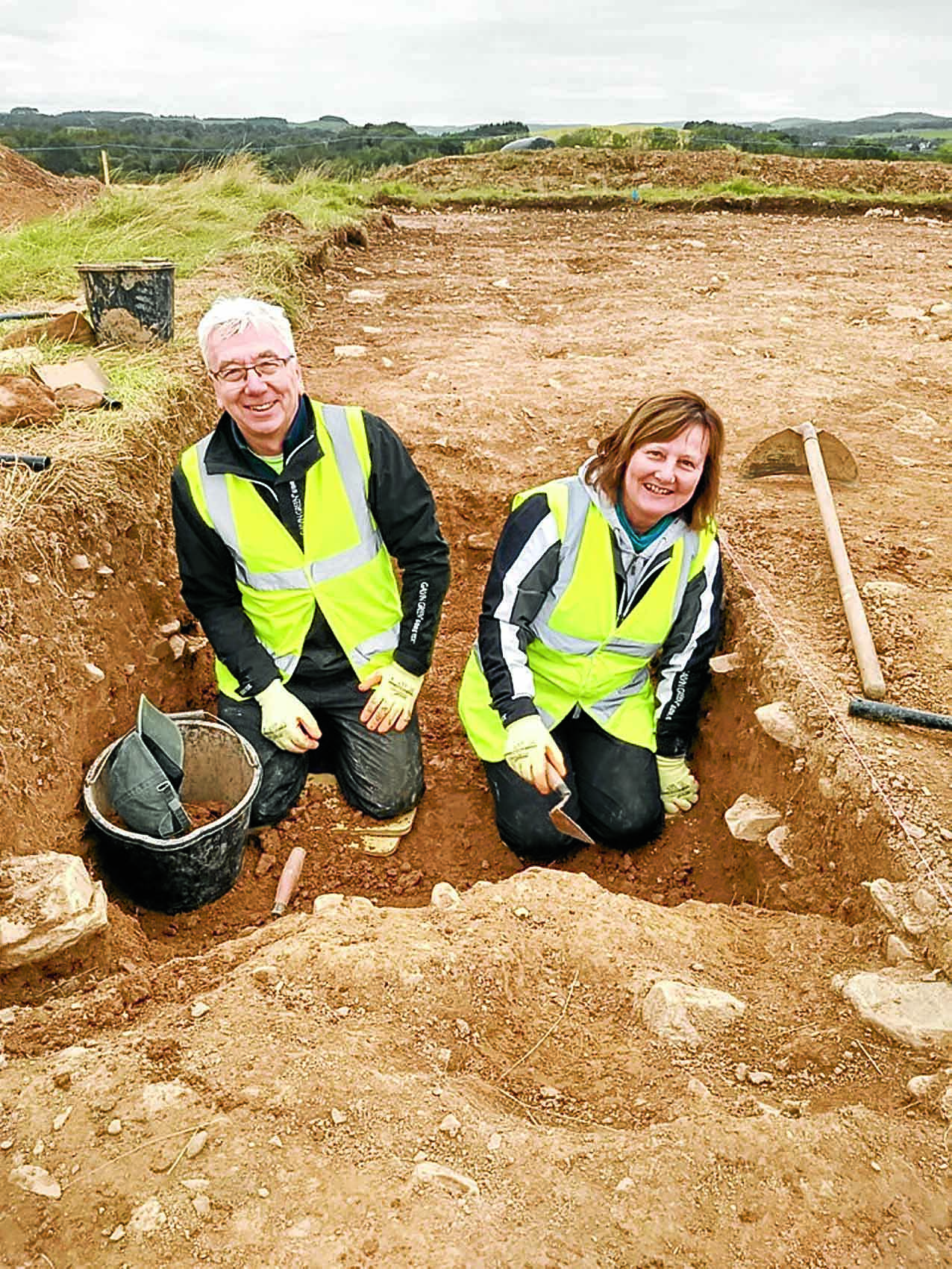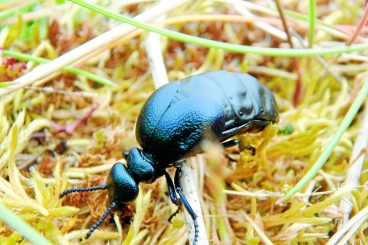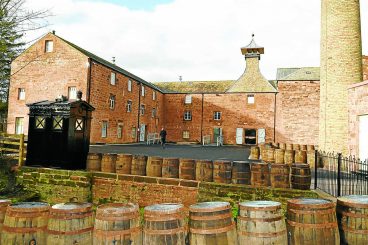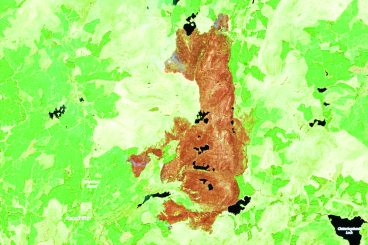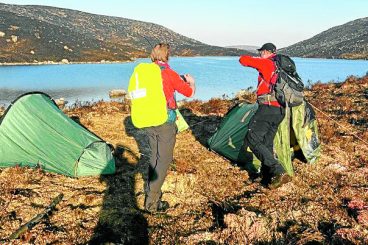Participants in a community archaeology project have made discoveries that tell a story of people living on what is now the Threave Estate near Castle Douglas 10,000 years ago in the Mesolithic period, a time when hunter-gatherers roamed and Scotland’s flora and fauna were flourishing again following the last Ice Age.
The Galloway Glens community archaeology project ‘Can You Dig It’ carried out a ten-day dig on the National Trust for Scotland’s Threave Estate in summer 2019. They unearthed some great finds at the time, including a lead shot from the 16th to 18th century and some flints from the late Neolithic or Early Bronze Age.
However, since then, some of the carbonised material recovered has been sent away for radiocarbon dating at the Scottish Universities Environmental Research Centre and the dates they have revealed are fascinating.
It has long been known that Little Wood Hill on the NTS Threave Estate is the location of a fascinating archaeological site, with the remains of a D-shaped enclosure on top of the hill first recognised on aerial photographs taken in the late 1940s. It was later revealed to date back to the Iron Age.
The Can You Dig It excavation sought to build on this work and a sample recovered by the volunteers from the end of the ditch has now been dated to between AD 75 to 214 – firmly within the Iron Age. This confirms the date recovered by the Thistle Camp, which has been recalibrated to between 41 BC and AD 125.
Experts are still unsure what the enclosure would have been used for, with ideas ranging from a small farmstead or a livestock enclosure, to a defensive position.
Even more excitingly, a tiny burnt hazelnut shell was also found and has been dated to between 8547 and 8312 BC – evidence of human activity on the Threave Estate from the Mesolithic period!
Discovered on prehistoric sites across the country, hazelnuts have long been established as a favourite snack of the Mesolithic people. The people of Galloway at that time would have lived nomadically, moving from water source to food source as they became available.
Traces of human habitation within Scotland go back to around 12,000 BC, but there was a dramatic climatic downturn around 10,900 BC which likely caused a complete depopulation.
It is possible that the people who burnt this nutshell could have been amongst the first to re-populate the country.
Derek Alexander, head of archaeology for the National Trust for Scotland, said: “Over the years we have gradually built up an understanding of past human activity at Threave throughout prehistory and history. This radiocarbon date for Mesolithic activity is really exciting, as it is the first evidence we have from this time and is the earliest date recovered at Threave so far.”
Claire Williamson, of Rathmell Archaeology, who is delivering Can You Dig It for the Galloway Glens said: “Having the Iron Age date of the enclosure confirmed was what we were hoping for, but to also have this small indication of Mesolithic life on the estate is amazing. This could not have been possible without the hard work of the volunteers, whose enthusiasm for the archaeology never faltered.”
Meanwhile, Dr Samuel Gallacher, from Threave Gardens and Estate, said: “We love to surprise our many visitors with unexpected discoveries and stories at Threave, and finding out about this new evidence of our very ancient history will no doubt fascinate many.”
Can You Dig It will run for another year and co-ordinator Helen Keron said: Thanks to our funding from the National Lottery Heritage Fund and from Historic Environment Scotland, Can You Dig It will be continuing into 2022, so there will be plenty of opportunities to get involved in the project and its discoveries going forward.”





